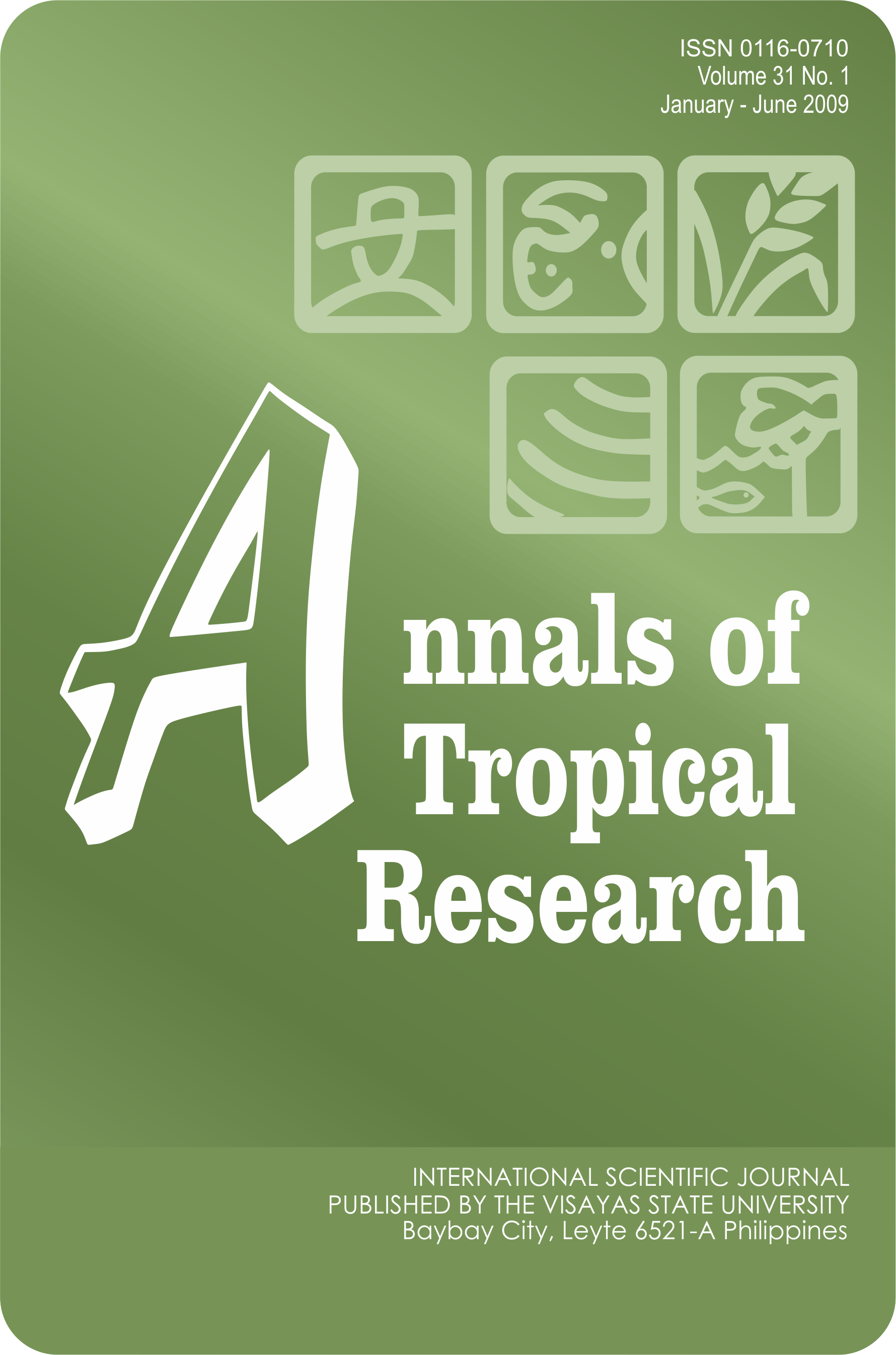Nutrient characteristics of aggregates and rhizosphere of a degraded upland soil: Implication for soil fertility evaluation
DOI:
https://doi.org/10.32945/atr3115.2009Keywords:
degraded soil, soil aggregates, rhizosphere soil, soil fertility evaluationAbstract
The influence of aggregates and rhizosphere on nutrient availability of degraded tropical soils is not yet well understood. The study evaluated differences in the nutrient characteristics between rhizosphere and non-rhizosphere soils, aggregated and homogenized soil samples, and inner and outer portions of aggregates. Soil samples were collected from a degraded upland soil in Pinabacdao, Samar, Philippines, and analyzed for selected soil properties. Results revealed that rhizosphere soil had higher organic matter (OM), available P contents, and exchangeable Ca and Mg contents than the non-rhizosphere soil but with no considerable variation in soil pH. Results also showed no differences in the chemical properties between the outer and inner portions of aggregates and that the aggregated samples slightly differed from the homogenized soil samples in terms of some chemical characteristics. Findings suggest that the standard practice of homogenizing soil sample for analysis may have limitations for fertility evaluation of degraded soils.
Downloads
Submitted
Published
How to Cite
Issue
Section
License

This work is licensed under a Creative Commons Attribution-NonCommercial-ShareAlike 4.0 International License.











